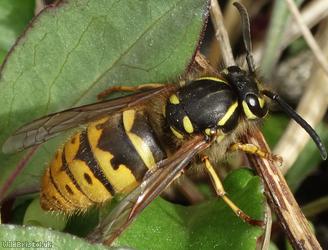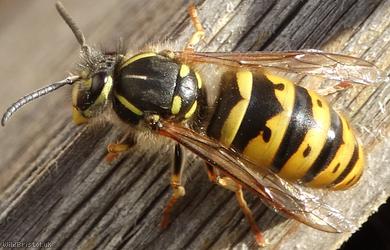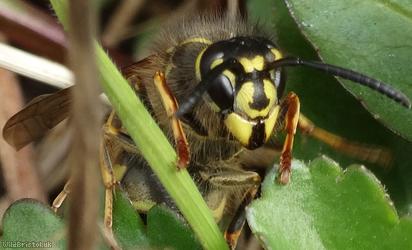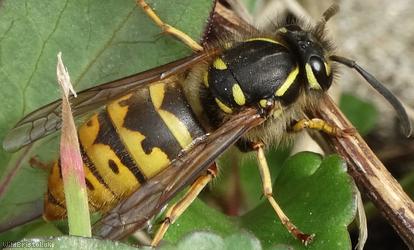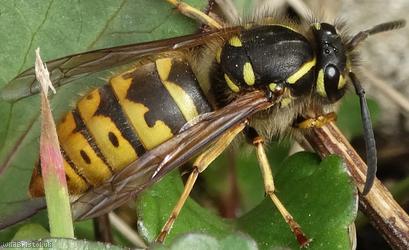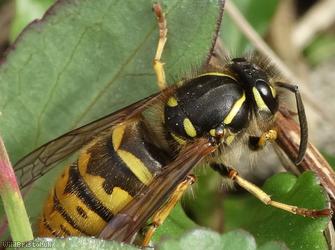Common Wasp - Vespula vulgaris
Favourite Photos
Species Description
Common and widespread throughout the UK. Habitat includes: Anywhere but especially in gardens, parks, allotments, cemeteries, woodland, hedgerows, meadows etc. Length: 2 cm. Flight period: April to October but in milder areas it can be seen from March to December. Life story: Nests in wall cavities, hollow trees and attics etc. Queens are the only one to survive the winter and emerge in early Spring. She searches for a nest site then locates a wood source. Once a wood source is found she will then start stripping thin layers off, running downwards, chewing it to take back to the nest to and starts reconstruction of the centre piece after which a few worker eggs are laid. Once hatched they will take over doing all the hard work, building up the nest and foraging whilst the Queens sole job is to lay eggs. When Autumn comes the Queen lays her last eggs (Male/drones and Queens) which once hatched, mate and the New Queens fly off in search of a place to hibernate over the winter months (dry, frost-free places such as a shed) and the Drones along with the rest of the colony die once the frosts hit. Next spring the New Queens emerge and the process starts all over again.
